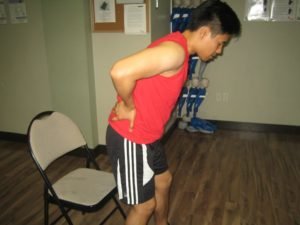A compression fracture of the spine involves a break in one of the vertebrae bones due to a compressive force. This type of fracture typically occurs in the lower back due to the additional weight placed on the vertebrae above.
Symptoms
The symptoms of compression fracture of the spine typically include pain in the site of the fracture that can radiate to the hips, thighs or buttocks. The neural symptoms such as tingling, numbness and weakness are also present along with bowel or bladder symptoms depending on how the fracture presses onto the spinal cord.
What are the causes?

The compression fracture of the spine typically occurs due to the compressive force placed on the spine. Take note that this can occur during a traumatic injury such as falling from a height or landing on the buttocks or feet. Among the elderly, compression fractures are more likely to occur due to osteoporosis or other current spinal issues that leads to the weakening of the bones. Remember that there might not be a particular incident that causes it and the pain can gradually develop.
Due to the weakening of the bone, the vertebra is compressed under the weight of the structures above it. Once the bone thins out, it could no longer support as much load and fractures occur easily. Among those who have multiple compression fractures, they start to develop a bent over appearance. This occurs since the vertebrae carries the weight through the body at the front and end up compressed at the front, thus remain the same in the back. In addition, involvement of the nerve is also common in both traumatic and degenerative compression fracture of the spine due to the closeness of the nerve roots and spinal cord.
Management of a compression fracture of the spine
The treatment will depend on the form of compression fracture sustained by the individual.
Traumatic compression fracture of the spine
If an individual experiences back pain after a fall, it is important to seek medical attention. After the assessment, the doctor will request for an X-ray or CT scan to confirm a diagnosis. When it comes to a traumatic compression fracture of the spine, it would require surgery to pin the vertebrae back in place as well as avoid spinal cord injury.
Degenerative compression fracture of the spine
The individual is encouraged to rest from any aggravating activities. The doctor will usually prescribe pain medications. In most cases, a back support will be used to help relieve some of the load off the vertebrae. To recognize the symptoms of this type of fracture, sign up for a first aid course today.
For those who have osteoporosis, the individual should engage in weight bearing exercises as well as increasing the intake of calcium. If there is a possibility of vertebral collapse, surgery might be required. In such cases, vertebroplasty will be performed which involves the injection of a cement-like material into the vertebra in order to stabilize the fracture and restore the proper height of the bone.
